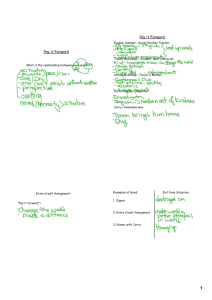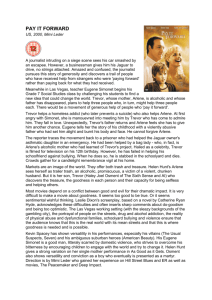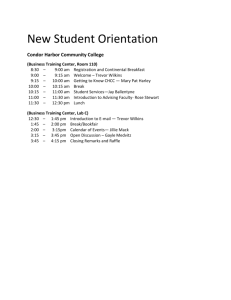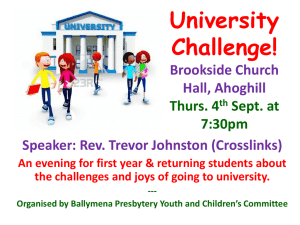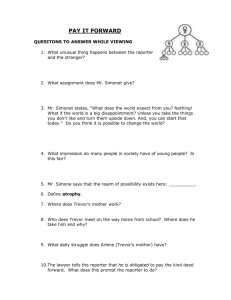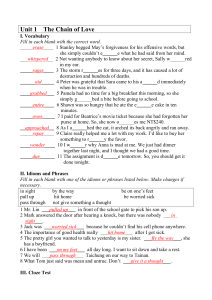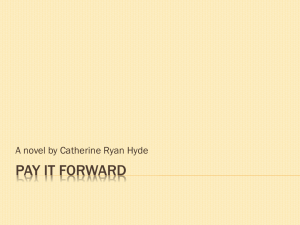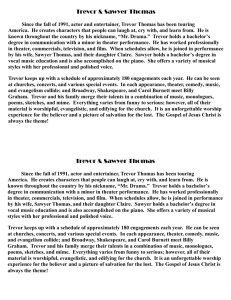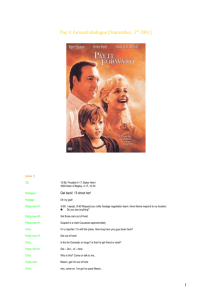Portugal - COMENIUS
advertisement
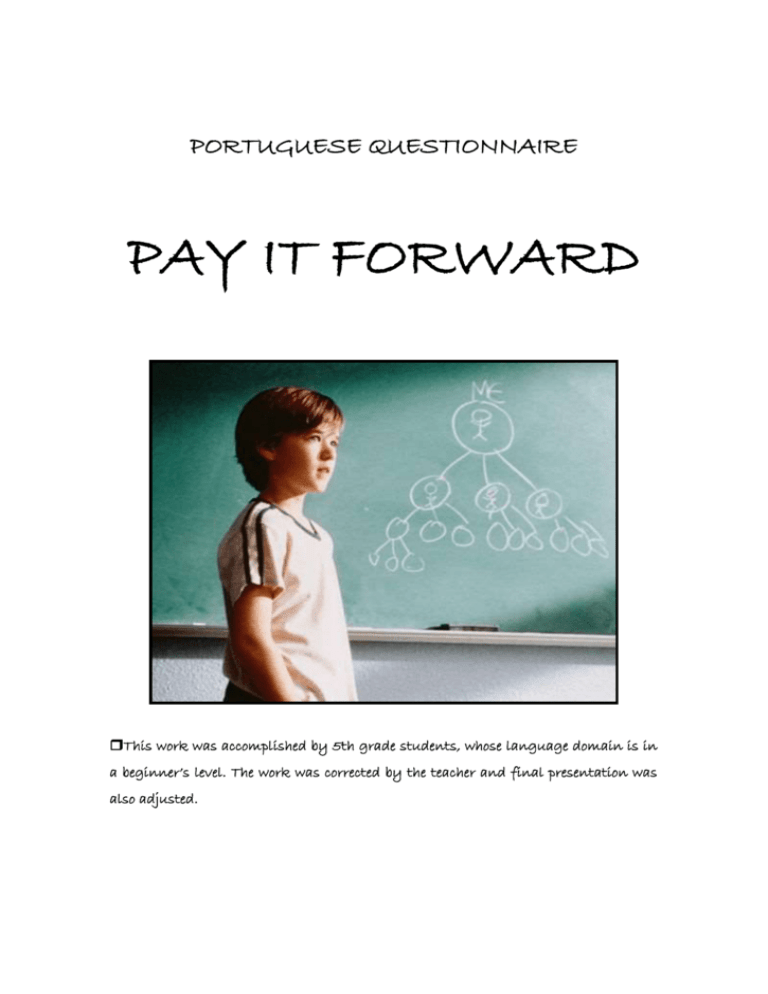
PORTUGUESE QUESTIONNAIRE PAY IT FORWARD This work was accomplished by 5th grade students, whose language domain is in a beginner’s level. The work was corrected by the teacher and final presentation was also adjusted. PAY IT FORWARD 2000 (123 minutes) Director: Mimi Leder This film was based on a book by Catherine Ryan Hyde. The screenplay was written by Leslie Dixon. Portuguese title: Favores em cadeia Synopsis : A young boy imagines a simple way to change the world. Trevor (Haley Joel Osment) is a 11-year-old boy who comes from a troubled home; his mother Arlene (Helen Hunt) is an alcoholic trying to hold down two jobs to support her son, while Trevor's father (Jon Bon Jovi) left his family behind some time ago. On his first day of school he finds himself face-to-face with the realities of middle school in Las Vegas - including metal detectors and bullies. Trevor is given a class project to complete by his social studies teacher Eugene Simonet (Kevin Spacey), a man with burn scars on his face and neck. Simonet is a challenging and unconventional sort of educator, he doesn't want his pupils to learn places and dates and he wants to prepare them to face life. His task is to come up with a plan that will change the world through direct action. On his way back home from school, Trevor notices a homeless man, Jerry (James Caviezel) and decides to make a difference in Jerry's life. Trevor then comes up with the plan to "pay it forward" by doing a good thing for three people who must do good actions for three other people, creating an altruistic pyramid system. Next, he tries to join Arlene with Mr. Simonet, since both seem to be lonely and the controlled teacher might help Arlene stay away from alcohol and she can help him to heal his inside burns, caused by an abusive father. Finally, he tries to rescue one of his schoolmates, who is continuously tormented by bullies. Meanwhile, Chris (Jay Mohr), a journalist, is trying to find out why a total stranger gave him a brand new car. The man's only explanation is that he is simply "paying it forward". Chris identifies Trevor as the originator of "pay it forward," and conducts a recorded interview at the school. Trevor explains his hopes for the idea, but voices his concerns that people may be too afraid to change their own lives in order to make the whole world a better place. Eugene and Arlene are there and they finally understand they belong together. While they celebrate their compromise they hear shouts outside. Trevor was trying to defend a friend who was being attacked by older and bigger bullies. Suddenly Trevor is pushed onto the boy with the knife and he is stabbed in the abdomen. They ran to the hospital but he finally dies. Utterly disturbed, Arlene and Eugene are watching a television news report about "pay it forward" and Trevor's death, and learn that the movement has grown countrywide. Stepping outside, they see hundreds of people gathering in a vigil to pay their respects to Trevor and still more people arriving. We wonder if this movement could really happen in nowadays society, where everyone is more concerned about individuality. However it seems more important to know if we confronted with an act of goodwill and kindness will be prepared to pass it through, to be connected and to be able to reach out for others. Questions 1. Who are the main characters of the movie? 2. Where does the story take place? 3. Who is Mr. Simonet and why does he have scars on his face? 4. Why did Trevor come up with the “Pay it forward” idea? 5. Explain the guidelines of Trevor’s project. 6. What does he do in first place and what is the result of his action? 7. Why does Trevor want to join his mother with Mr. Simonet? 8. Who is Chris? 9. What happens to Trevor at the end? 10. Unknown people arrive at Trevor’s house to pay their respect. Why do you think they do that? 11. Do you believe this solidarity chain will be possible to achieve in the real world? Why/ why not? 12. Did you like the film? Give your opinion. Main issues raised in this movie Violence Solidarity Child mistreatment Belief in a better world Alcoholism Acceptance and forgiveness Bullying Hope
